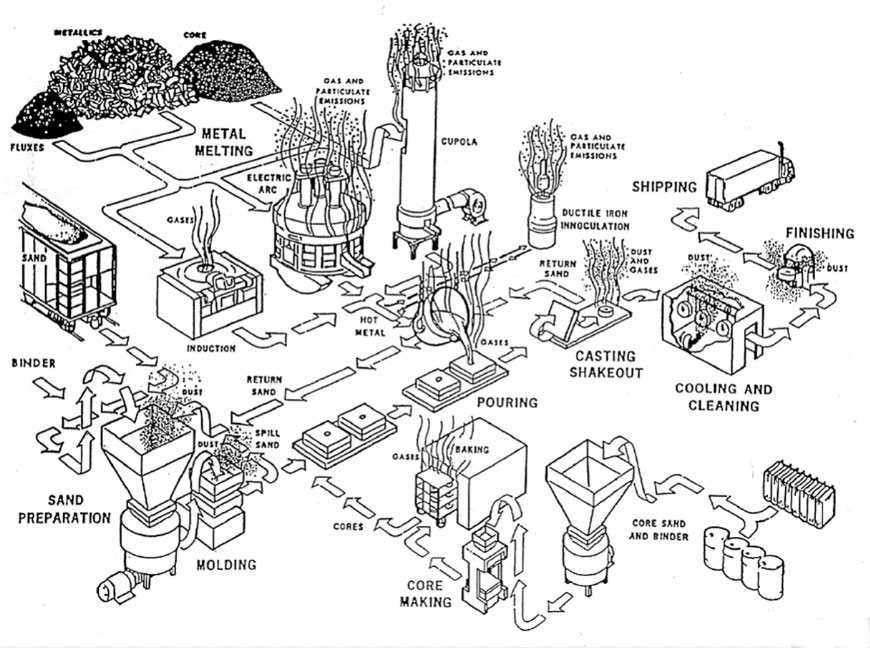
The future of sand casting parts looks promising, with several advancements and trends on the horizon that will shape the industry’s landscape. As technology and manufacturing practices continue to evolve, sand casting is expected to benefit from these developments. Here are some advancements and trends to watch for in the future of sand casting parts:
1. Digitalization and Simulation:
- The adoption of digital technologies, such as computer-aided design (CAD) and simulation software, will become more prevalent in sand casting.
- Digital simulations will allow engineers to optimize mold designs, gating systems, and casting processes, leading to improved efficiency and reduced defects.
2. Additive Manufacturing and 3D Printing Integration:
- The integration of sand 3D printing or additive manufacturing with traditional sand casting will enable the production of intricate and complex sand molds.
- Hybrid approaches, combining 3D printing with conventional sand casting, will offer greater design freedom and faster prototyping.
3. Sustainable Practices:
- The sand casting industry will continue to adopt more sustainable practices to reduce its environmental impact.
- Eco-friendly binders, reclaimed sand, and energy-efficient technologies will become more common, aligning with the growing focus on sustainability.
4. Automation and Robotics:
- Automation and robotics will play an increasing role in sand casting operations, enhancing productivity and consistency.
- Robotic systems will be used for tasks like mold handling, pouring, and post-casting processes.
5. Advanced Materials and Alloys:
- The development of advanced materials and alloys will expand the range of applications for sand casting parts.
- New material formulations will offer improved mechanical properties, high-temperature resistance, and lightweighting benefits.
6. Real-Time Process Monitoring:
- The implementation of real-time process monitoring and data analytics will enable predictive maintenance and quality control in sand casting operations.
- Sensors and IoT (Internet of Things) technologies will provide insights into process parameters and potential defects.
7. Improved Surface Finishing:
- Innovations in sand casting techniques will lead to improved surface finish of castings, reducing the need for additional post-processing steps.
8. Miniaturization and Microcasting:
- Advancements in microcasting techniques will enable the production of miniaturized parts used in electronics and medical devices.
- Fine-grain sand and improved gating systems will support the casting of intricate micro-scale components.
9. Customization and On-Demand Manufacturing:
- Sand casting will continue to cater to on-demand manufacturing needs, offering cost-effective solutions for customized and low-volume production.
10. Industry 4.0 Integration:
- Sand casting foundries will increasingly integrate Industry 4.0 principles, connecting machines and systems for smarter, more efficient production.
The future of sand casting parts will be shaped by a combination of traditional expertise and innovative technologies. As the industry embraces digitalization, automation, sustainable practices, and advanced materials, sand casting will remain a reliable and adaptable manufacturing method, catering to a wide range of industries and applications.
